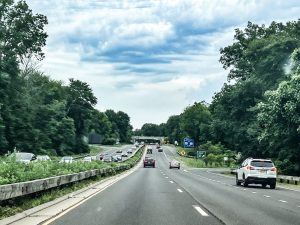By Chery Dunson and Sue Baker, Advisory Board Chairs

Greenwich is fortunate to have an extensive tree canopy providing a vivid and kaleidoscopic display of color and form throughout our spring, summer and fall seasons. Trees line our streets. They stand in our parks, on our school grounds, and make up our woodlands. They adorn the yards around our homes. Trees provide benefits to town residents by shielding us from heat and cold, purifying our air and water and significantly reducing stormwater flooding. They soften the noise from ever increasing traffic and the visual impact of our urban built environments. Along with all this they provide food and shelter essential to birds and other wildlife.
Among the many thousands, there are exceptional trees notable for their great size, unusual species or historic or social significance. In the 1980s, the Connecticut College Arboretum established the statewide Notable Tree program, surveying towns across Connecticut. The program identified over 100 notable trees on public and private lands in Greenwich. If you are interested in learning more about the Connecticut College Arboretum Notable Trees project you can visit – http://oak.conncoll.edu:8080/notabletrees/
Until recently, the status of many of the Greenwich listed trees was unknown. Throughout the past year, the Greenwich Tree Conservancy has located many of these trees providing an update of the town’s listing. We have determined if the trees are still alive and healthy, their current size and status, or if they had been removed.
The process is straightforward. We reach out to property owners requesting permission to access their property to verify the status of the tree. A team of three volunteers locates each tree and takes measurements to determine the diameter of its trunk, the spread of its crown, and its overall height. Each of these measurements contributes to an overall rating as established by American Forestry Association. This information is provided to the CT College Arboretum in order to update the Greenwich listing. Among our town’s Notable Trees are Oaks, Horse Chestnuts, American Sycamores, London Planetrees and Japanese Zelkovas.
To date, we have verified the status of all the notable trees on public lands. Additionally, half of the private property owners have granted us access. We would like to thank the numerous property owners who beyond granting us access have enabled these notable trees to survive and thrive over the decades!
Some verified notable trees you can look for on public lands include a Sweetgum (Liquidamber styraciflua), Swamp White Oak (Quercus bicolor) and Black Oak (Quercus velutina) in Bruce Park. A London Planetree (Platanus acerifolia) at the Board of Education building at 290 Greenwich Avenue. A Thread Leaf Japanese Maple (Acre palmatum‘Dissectum’ ), Monkey Puzzle Tree (Araucaria araucana), Thayer Yew (Taxus media ‘Thayerae’) and Sargent’s Weeping Hemlock (Tsuga canadensis ‘Sargentii’) in the Montgomery Pinetum in Cos Cob. An American Sycamore (Platanus occidentalis) at North Mianus School and a Horse Chestnut (Aesculus hippocastanum) on Sound Beach Avenue in Old Greenwich.
This is an ongoing project for the Tree Conservancy and we are now turning our attention to adding new trees to the CT College Notable Tree listing for Greenwich. If you have a tree on your property that you believe may be notable for its size, species or historic significance, or if you delayed responding to our letter, you may contact us at: arboretum@greenwichtreeconservancy.com.
To find out more about the Greenwich Tree Conservancy, visit us at: www.greenwichtreeconservancy.org.
We look forward to hearing from you!

